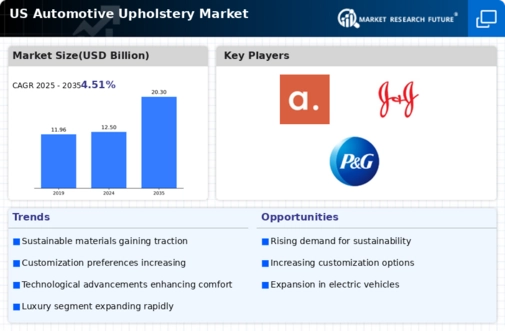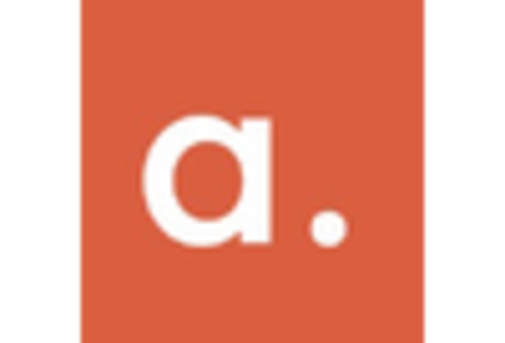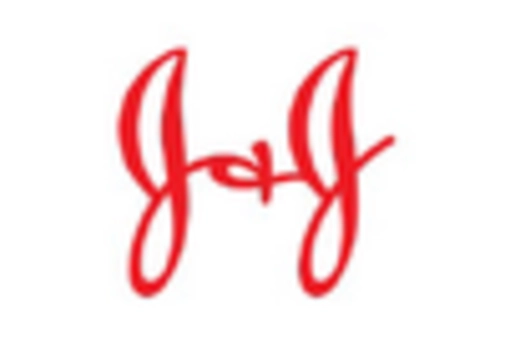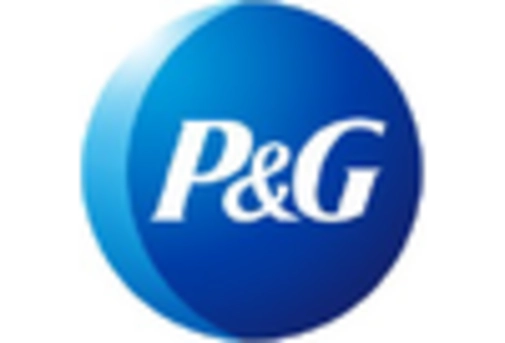Growth of Electric Vehicles
The automotive upholstery market is significantly influenced by the rapid growth of electric vehicles (EVs) in the US. As EV manufacturers strive to create a unique identity, they often opt for innovative and sustainable upholstery materials. This shift is likely to drive demand for eco-friendly fabrics, such as recycled polyester and organic cotton, which align with the values of environmentally conscious consumers. In 2025, it is estimated that the EV segment will represent around 20% of the total automotive market, thereby creating substantial opportunities for upholstery suppliers to cater to this evolving demand within the automotive upholstery market.
Rising Consumer Demand for Comfort
The automotive upholstery market experiences a notable increase in consumer demand for comfort and luxury in vehicles. As consumers prioritize comfort, manufacturers are compelled to enhance the quality of upholstery materials. This trend is reflected in the growing preference for premium fabrics and leather, which are perceived to elevate the driving experience. In 2025, the market for high-end upholstery materials is projected to account for approximately 30% of total sales in the automotive upholstery market. This shift towards comfort-oriented designs indicates a significant opportunity for manufacturers to innovate and differentiate their products, thereby potentially increasing market share.
Regulatory Standards and Compliance
The automotive upholstery market is increasingly influenced by regulatory standards and compliance requirements aimed at enhancing vehicle safety and environmental sustainability. Regulations concerning the use of non-toxic materials and fire-resistant fabrics are becoming more stringent, compelling manufacturers to adapt their upholstery offerings. Compliance with these regulations not only ensures consumer safety but also enhances brand reputation. In 2025, it is expected that adherence to these standards will drive a shift towards the use of certified materials, potentially increasing the market share of compliant upholstery products within the automotive upholstery market. This regulatory landscape presents both challenges and opportunities for manufacturers to innovate and meet evolving consumer expectations.
Increased Focus on Vehicle Aesthetics
The automotive upholstery market is witnessing an increased focus on vehicle aesthetics, driven by consumer preferences for visually appealing interiors. As competition intensifies among automakers, the demand for stylish and customizable upholstery options is on the rise. This trend is particularly evident in the luxury vehicle segment, where consumers are willing to invest in bespoke upholstery solutions. In 2025, it is anticipated that the luxury segment will contribute to nearly 25% of the overall automotive upholstery market. This emphasis on aesthetics presents a lucrative opportunity for manufacturers to collaborate with designers and offer unique upholstery solutions that cater to diverse consumer tastes.
Technological Advancements in Materials
Technological advancements in materials science are reshaping the automotive upholstery market. Innovations such as nanotechnology and smart textiles are being integrated into upholstery, enhancing durability, stain resistance, and comfort. For instance, the introduction of self-cleaning fabrics and temperature-regulating materials is gaining traction among manufacturers. This trend not only meets consumer expectations for high-performance materials but also aligns with the automotive industry's push for sustainability. As a result, the market for advanced upholstery materials is projected to grow by approximately 15% annually, indicating a robust opportunity for companies to invest in research and development within the automotive upholstery market.














Leave a Comment